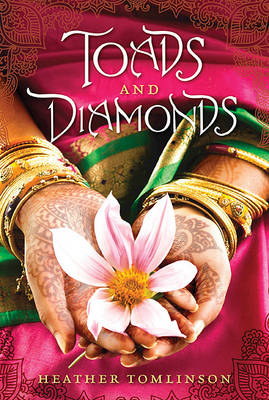
nannah
Written on Jul 19, 2021
Representation:
- the two protagonists, as well as the rest of the cast, are Indian
When sisters Diribani and Tana encounter the snake goddess Naghali-Ji at their local well, they’re each given extraordinary gifts: Diribani the ability to speak gemstones and flowers into existence, and Tana snakes and frogs. Diribani’s gift brings her a life among royalty, where she hopes her riches can improve the life of her people. Tana’s gift, however, makes her forced to live outside town by the snake-fearing governor. But Diribani’s world also comes with assassin’s and back-stabbing nobles, and without Tana’s ability in the village, plague spreads. The sisters are left wondering what exactly the goddess meant by giving them these abilities.
I’m familiar with the Toads and Diamonds fairytale so I know about its annoying, “bad sister gets snakes, good sister gets gems” deal. Heather Tomlinson does the story a million favors by showing that not all things are as straightforward as they seem and making her characters a little more complicated. Her writing is also beautiful and lush, transporting you to this fictional India deeply and fully.
But the religions in this world took me out of it. In the author’s note, Heather Tomlinson says the two religions featured in the novel (the MC’s religion, worshipping the 12 gods and goddesses; and the religion of those who have conquered the MC’s people, the monotheistic Believers) are invented, simply containing characteristics of many of India’s religions. However, it reads like Tana and Diribani’s religion is largely based on Hinduism, with little bits of inspiration taken from other religions -- and the Believers largely on Islam. Even more so when she notes that the novel resembles the Mughal Empire’s time period, in which Islam ruled over many Hindu artisans.
Obviously, that’s not a problem by itself, but the Believers and their religion aren’t really depicted in a lovely kind of light. There are specific Believers who are good people, but the religion itself and its customs don’t stop being badmouthed throughout the entire novel. For a book made for a Western audience, this leaves a sour taste in my mouth.
Not to mention, I expected religion to play a larger role than it did. It was presented as a huge issue between all the characters, and then it was kind of dropped by the end.
I do think the story is okay. It has its strengths, but it didn’t engross me as much as I hoped it would.

